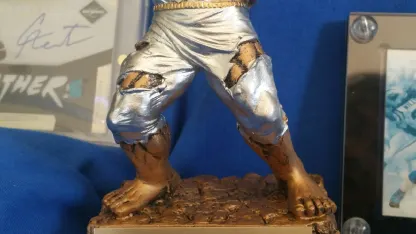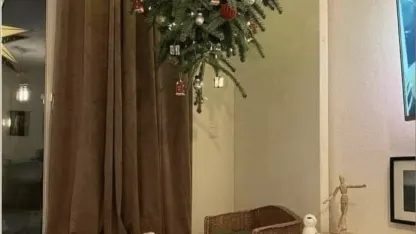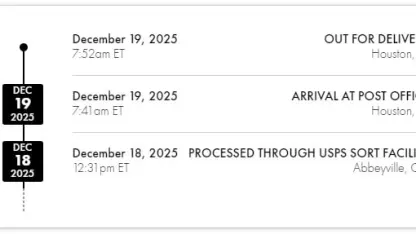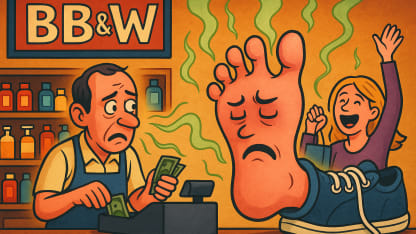Verrazano Luggage
















Our Take
- Take your choice of 25" rolling duffel, 20" spinner carry-on, or 24" spinner that may or may not be carry-onable depending on how big of dicks the airline feels like being that day- Black with gray racing stripes so it’ll feel like you’re really zooming through the terminal- Soft-sided poly/tweed blend with various interior and exterior pockets, nothing too surprising if you’ve seen luggage before- Easy-roll wheel design is a big improvement over the ridiculously-difficult-roll wheel design they were thinking about going with- Model: 50069042, 50068786, 50068912 (decent Google results for just being numbers, but this fern beats 'em out.)
Italian Pop Through the Ages: A Playlist
Hey, Meh writer @JasonToon here. This Verrazano Luggage, of course, takes its name from the Italian explorer who was the first European to explore New York Harbor, and who also lent his name to the bridge from Brooklyn to Staten Island and various other landmarks and organizations around Staten Island. On his travels, he didn’t have anything like his choice of a rolling duffel or two different spinner bags. And his last name is generally spelled with two Z’s: Giovanni da Verrazzano. But we can see how these bags might come in handy if you’re discovering New York (or anywhere else) for yourself. For this weekend playlist, old Giovanni da V. got me thinking about Italy. Not the grand traditions of Italian classical music, which are rich and deep and way beyond my limited ken. But about Italian popular music. Italy has never exported a dominant, distinctive style of pop music. It’s more typically taken what was going on in the mainstream of pop music in Europe, the UK, and the USA, and given it a flamboyant, passionate Italian spin. Let’s walk through a museum of the last 50 years or so of Italian pop, also compiled in a YouTube playlist.**Nico Fidenco - “Su Nel Cielo” (1960)Sliding easily from florid to cool, “Su Nel Cielo” brings an especially Italian flavor to the rock-a-ballad form that dominated the charts in the USA at the same time.Rita Pavone - “La Partite Di Pallone” (1963)Over an Italian take on the girl-group sound, teenage belter Rita Pavone asks her boyfriend why he’d rather watch soccer every Sunday than hang out with her. Dig the twangy guitar, pounding tom-toms, shimmering organ, and pizzicato strings.Gianni Morandi - “Ho chiuso le fenestre” (1963)Another cathedral of teenage yearning, this time with honking sax thrown into the mix. Morandi would become one of Italy’s biggest stars, both as a singer and an actor.Piero Piccioni - “Adoro Ancora” (1964)Film music has always been central to Italian pop, with many of the songs in this list first appearing in movies. Jazz musician Piero Piccioni scored more than 300 movies, in every imaginable style, but he seemed most comfortable with light bossa nova-inflected jazz, as in this piece from the film La Vita Agra.Ennio Morricone - “Per Qualche Dollaro in Pi” (1965)If there’s one name everyone associates with Italian movie music, though, it’s Ennio Morricone. You’ve heard his theme for The Good, The Bad & The Ugly countless times, so here’s the slightly less ubiquitous theme from For a Few Dollars More. It’s every bit as lunatic and atmospheric, redolent of a Wild West that never existed but feels no less real.I Corvi - “Sono Un Ragazzo Di Strada” (1966)**It took rock ‘n’ roll and Italy a while to figure out how they fit together. I Corvi (“The Crows”), one of Italy’s top ‘60s rock bands, had a great theatrical gimmick, playing in black capes and frilly shirts like Count Dracula or some other decadent aristocrat, with a stuffed raven mounted on the bass guitar. Their records, though, were cover versions in Italian of American and British bands’ songs. They work up a nice head of sinister steam on this take on the Brogues’ chestnut “I Ain’t No Miracle Worker”, but it would have been nice to see what they could do with some original material. https://d2b8wt72ktn9a2.cloudfront.net/mediocre/video/upload/v1735929087/no_longer_available_qknaul.mp4**Lucio Battisti - “Un’avventura” (1969)Material was no problem for prolific songwriter Lucio Battisti, whose songs were recorded by artists like the Grass Roots and the Hollies. His own records land somewhere between the Italian Bob Dylan and the Italian Neil Diamond: smart, well-crafted pop that was aware of what was going on in the '60s but wouldn’t chase Mom and Dad away from the stereo, either.Le Orme - “Attesa Inerte” (1973)The land of Puccini and Verdi took naturally to the operatic pomp of progressive rock, making Italy a prog hotbed behind only the UK, USA, and Germany. A little of this stuff goes a long way for me personally, but this cut from Le Orme doesn’t outlast its welcome, and shows the Italian song tradition survived even when surrounded by cheesy synthesizers and clouds of ditchweed.Giorgio Moroder - “From Here to Eternity” (1977)Then disco happened, and Italian pop would never be the same. The undisputed Godfather of Italo-disco, Giorgio Moroder, set the pace with his tick-tock synth funk, bringing the same sound to smash hits by Donna Summer, Blondie, and dozens of others. That sound would loom large not only over Italy but the world in the '80s, then enjoy a resurgence in this century, a major influence on worldwide superstars like Daft Punk and Mark Ronson. Vice has a great “Bullshitter’s Guide to Italo-Disco” if you want to start digging in.Kano - “Now Baby Now” (1980)Subsequent Italo-disco artists dressed up Moroder’s lean, chilly sonic base with synth flourishes, handclaps, vocal effects, and other sonic opulence, without losing that essential techno-pulse.Baltimora - “Tarzan Boy” (1985)Italo-disco entered its terminal joke phase with silliness like this ludicrous deodorant commercial of a song. Oh, wait, sorry, it was actually a mouthwash commercial.Black Box - “Ride On Time” (1989)House music pointed the way out of Italo-disco’s dead end. Italo-house artists like Black Box may have been following the lead set in other countries, rather than pushing it forward the way the best Italo-disco did. But at least it showed Italy was still in the game.Jovanotti - “Bella” (1997)A party-reggae-rap goofball when he hit the scene in the late '80s, Jovanotti mellowed into a lucrative mainstay of the Italian charts, with lots of shout-outs to the likes of Amnesty International. I guess that makes him a cross between the Italian Beastie Boys and the Italian Sting.Malika Ayane - “La prima cosa bella” (2010)Malika Ayane may be half Moroccan, but she’s about as Italian as a pop singer can be. Classically trained in both voice and cello, she brings that precision and control to songs that lightly update traditional Italian balladry. This hit is even the theme song of a movie by the same name, another Italian tradition.Benny Benassi ft. Gary Go - “Cinema” (2011)Italian electronica is another one of those areas so vast, and so outside my wheelhouse, that I don’t dare attempt more than a nod in its direction. Benny Benassi’s done remixes for just about every huge American pop star of the past decade, but he’s a European star in his own right with glossy, upbeat tunes like this one. The one time I visited Italy, this is the kind of stuff I was most likely to hear in a bar or a shop.Fedez ft. Francesca Michielin - “Cigno Nero” (2013)**And, finally, Italy hasn’t been untouched by hip-hop, either. Despite the swerves and offbeats of a Romance language, Fedez manages a pretty impressive flow on one of the biggest hits of recent years, a triple-platinum smash with a big chorus sung by Italian X-Factor winner Francesca Michielin. Like every other song on this list, it’s dramatic, it’s passionate, it’s lavish: it’s Italian.https://d2b8wt72ktn9a2.cloudfront.net/mediocre/video/upload/v1736450811/faa98631e1fb5498cd135327523a2e11.mp4Whew! Even at 16 songs, one of our longest weekend playlists, we’ve barely scratched the surface of Italian pop music, and haven’t even touched on genres like jazz and punk. If this glamorous weekend playlist inspires you to check out Italy for yourself, we know where you can get a good deal on some nice bags.










